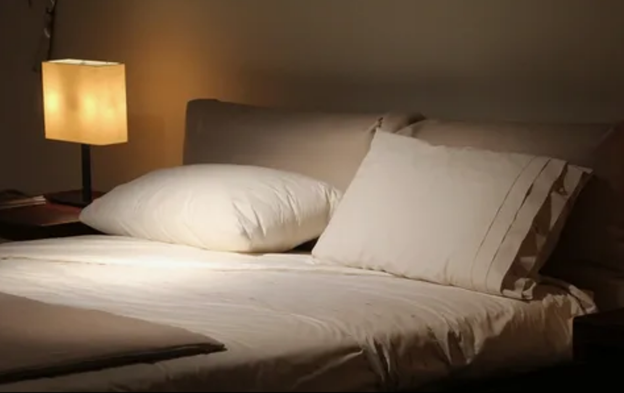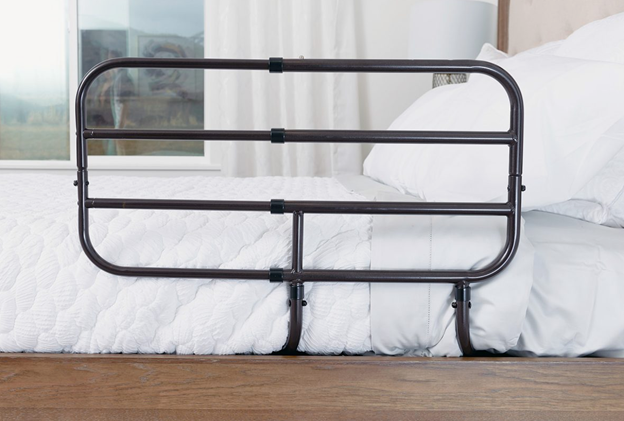Thus, keeping an elderly person warm is quite a vital factor in medical home beds and overall sleep environment. During our older age, there is a change in sleep patterns, and some physical conditions warrant modification to enable one to have a restful and safe night’s sleep. Following are the concerns involving the sleep environment of seniors that will be illustrated in this article about medical beds and other requirements.
Understanding the Importance of a Good Sleep Environment
It is noteworthy that sleep occupies an essential place in people’s health and is of paramount importance for the elderly population. Some of the complications may include memory impairment, reduced strength of the immune system, and boosted propensity to fall. For the elderly who have ailments the right lying down environment can also assist in alleviation of the ailment and hasten the healing process.
Creating a proper sleep environment can mean a lot of improvement in seniors’ quality of life. This is why one must not discount the influence of the overall arrangement of a bedroom environment beginning with the choice of a medical bed for home use and ending with the right type of bedding and appropriate room temperature.
Choosing the Right Medical Bed for Home
However, when it comes to getting comfortable for sleep, there is no equipment as influential as the bed. There are so many features that are found in a medical bed for home use given that seniors have specific requirements. They come as better to support the body, improved comfort, and safer beds.
Adjustable Features
A medical bed’s biggest selling point is its ability to be adjusted in certain areas. An additional feature that is frequently incorporated into these beds is the control of the head, foot, or overall height of the bed. It enables elderly people to adjust the chair in a manner that will give them the most suitable sleeping, reading, or television-watching position. Making changes to the position of the bed is also useful when specific health issues like heartburn or trouble breathing are present.
The caregivers can find the provision of bed height adjustment as a convenient way to help the senior without causing too much stress to themselves. This adjustability also helps in lessening the chances of falling when the user is getting in and out of the bed.
Supportive and Comfortable Mattresses
Like the medical bed, the mattress is an equally vital component of the patient’s care. It is common for most medical beds to have their particular mattress that ensures the patient receives excellent support and reduces pressure. Such mattresses are mostly developed from memory foam or consist of air cells that help in the molding of the user’s body.
Selecting the appropriate type of mattress helps to avoid the formation of sores and increases comfort. Some elderly patients have some particular health conditions that can be affected by the mattress they use such as arthritis, back issues, and the like, and these patients, therefore, need a mattress that accommodates these.
Setting Up the Sleep Environment

Once you have overcome the selection of the right medical bed and mattress, you should pay attention to other components of the sleep environment. Making the environment of the elders welcoming reduces stress and anxiety which is vital in addressing sleep issues.
Positioning the Bed
The location of the bed within a room should also take into consideration the aspects of comfort together with safety. As to the location of the bed, it is appropriate when the senior can see the door and the windows from the place where she or he is lying. Its positioning contributes to the ideas of comfort and direction, especially at night, and memory to those who may get lost at night.
Free the floor around the bed sufficiently so that it is easy to move around the room. This is especially relevant for caregivers because they can be called upon to help the senior at night. Do not locate the bed close to a window that is frequently opened or anything that produces noise as it interferes with the quality of the sleep.
Managing Lighting and Noise
Some of the most widespread sleep inhibitors include light and noise, especially in the case of people of senior age. When aiming at providing a restful setting, it would be useful to fit curtains or blinds which would prevent the entry of outside light. This is especially important if the bedroom gets a lot of street light or the first light of the day into it.
For noise control, white noise machines or fans will help cancel out those noises that interrupt sleep. It is also important that the noises are not abrupt and loud because they can wake up the senior and instead soft beep bass can be used to help the senior doze off to sleep. If hearing loss is an issue, make sure that any equipment that is required i.e., hearing aid is well placed within the reach and comfortable to access.
Choosing the Right Bedding
Comfort is provided by bedding hence it should be chosen carefully. Comforter liners, sheets, pillow cases should be made from cotton and any other soft cloth that will not make the body hot. If the senior is allergic or has sensitive skin, then it may be wise to incorporate hypoallergenic fabrics to minimize skin complications.
Another environmental factor that may affect sleep is the number and kind of pillows which are used. In various cases, such as in situations where the elderly person is suffering from neck or back pains, orthopedic pillows that have extra support could be of use. Check that the pillows are not placed too high or too low, because it is not healthy to have improper positioning.
Additional Considerations for Safety and Comfort
Beyond the basic setup, there are additional factors to consider that can enhance safety and comfort in the sleep environment.
Bed Rails and Safety Features

For elders who are at risk of falling out of bed, installing bed rails can provide an added level of safety. Many medical beds come with built-in rails, but transferable options are also available. These rails can stop falls and provide support when getting in and out of bed.
Some medical beds also offer features like alarms or sensors that alert caregivers if the senior tries to leave the bed. These safety measures can provide peace of mind and guarantee the senior takes early help if needed.
Nightstands and Accessibility
A nightstand is a necessity in any bedroom as it will enable the placing of important items such as a lamp, phone, books, water glass among other items at arm’s reach. Products such as water for drinking, medicines, glasses, and even a phone should be within the reach of the senior without having to stretch or sit up from the bed. A nightstand with drawers I believe is also useful to store other necessities that are needed at night.
About the bed, one needs to decide on the height of the nightstand. It should be around the height of or a little lower than the bed to accommodate young children’s movement.
Conclusion
Establishing the factors that embody a favorable sleep environment for elderly people, especially when one is placing a medical bed at home entails serious consideration. The process of selecting the best adjustable bed and comfortable mattress to provide the best setting in terms of room temperature, light, and minimal noise is all part of the process.
Thus, it can be seen that, somehow, paying attention to the details of establishing an optimum sleep environment for seniors will contribute to better quality sleep, better overall health, and better quality elderly life. In the case of a medical bed or a medical mattress, selecting the right sleep arrangement is critical for the health of your close ones.
